Once upon a time, the Moors called Valencia "the blessed land." Centuries later, the feeling of the city has not changed at all, although since then Valencia has become a modern dynamic metropolis. Over two thousand years of history, a colossal cultural code has accumulated here.
Valencia was founded by the Romans in the 1st century. Since then, she managed to visit the province of a powerful empire, part of the Mauritanian state and an independent Christian principality until she entered the united Spanish kingdom.
Valencia's urban area has several blue flag beaches where you can have a great vacation, and it is also home to the famous Las Fallas fire festival, which attracts thousands of tourists every year. And the most delicious Valencian paella is probably tried by all the guests of the city.
What to see and where to go in Valencia?
The most interesting and beautiful places for walking. Photos and a short description.
- City of Arts and Sciences
- Gate of Serranos
- Gate Kuart
- City Hall Square
- Plaza de la Reina
- Cathedral of Valencia
- Basilica of Our Lady Defender of the Dispossessed
- Church of Saints John
- Church of Santa Catalina
- Museum of Fine Arts of Valencia
- Palace of the Marquises of Dos Aguas
- Palace of the Generalidad
- Lonja de la Seda (silk exchange)
- Northern Station
- Plaza de Toros (bullring)
- Central Market
- Columbus Market
- Turia River Gardens
- Bioparc Valencia
- Albufera Natural Park
City of Arts and Sciences
A modern entertainment complex, a real architectural pride of all Spain. The futuristic ensemble created by Santiago Calatrava contrasts strongly with the city's historic neighborhoods. There is an exhibition gallery, a museum-city of sciences, a planetarium (which includes a cinema and a laser show theater), an opera house and an oceanarium. The complex has been open to the public since 1998, over the following years it was completed.

Address: Avenida del Profesor López Piñero, 7, 46013 Valencia, Spain
Phone: +34 902 100 031
Opening hours: Mon-Sun 10:00-19:00
Gate of Serranos
Ancient city gates, preserved from the XIV century. They were intended for the purposes of defending the city and repelling enemy attacks. Over the past centuries, the gate towers managed to serve as a prison for noble nobles and a repository for museum exhibits during the wars (the collections of the Prado Museum were specially evacuated here to protect them from possible bombardments). In our time, Serranos perform a symbolic function.

Address: Plaza de los Serranos, 46003 Valencia, Spain
Phone: +34 963 52 71 32
Opening hours: Вт-Sun 10:00-19:00, Пн закрыто
Gate Kuart
The second (after the Serranos Gate) ancient gates that have survived to our time, guarding the entrance to Valencia. From here begins the entrance to the old central part of the city. The structure was built in the Neapolitan style of limestone and stone and resembles a medieval Italian fort. Several centuries ago, a women's prison was located in the gate towers. In 1931, the building was given the status of a historical monument.
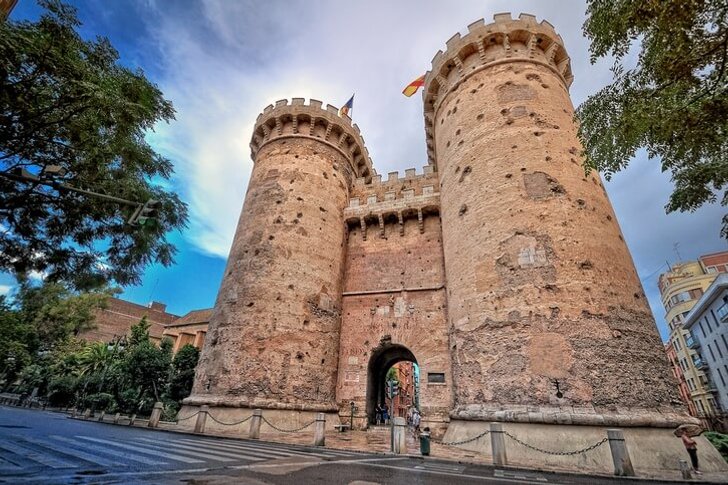
Address: Calle Quart, 46008 Valencia, Spain
Phone: +34 963 52 71 32
Opening hours: Вт-Sun 10:00-19:00, Пн закрыто
City Hall Square
The square is located in the historical part of Valencia. It hosts important public events for the city. There are several sights on the square at once: the central post office, the building of the Trade Assembly and the Municipality (City Hall). The last building deserves special attention. This is a picturesque palace of the late 18th century, decorated with baroque bas-reliefs, figured arches and balconies.
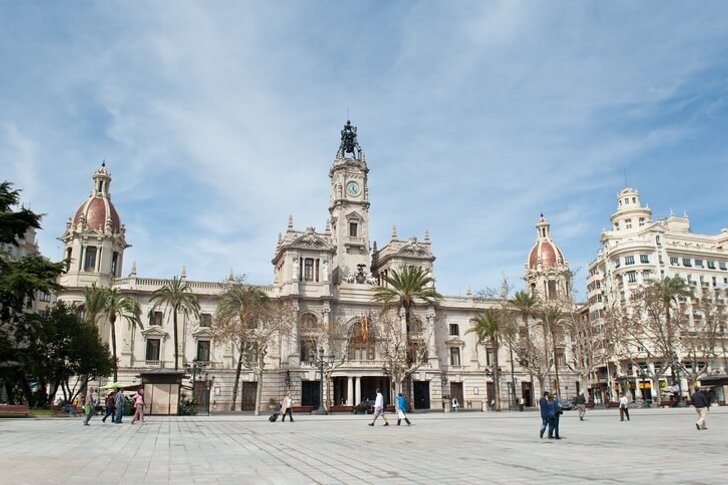
Address: Plaza del Ayuntamiento, 46002 Valencia, Spain
Phone: +34 963 52 20 00
Opening hours: 24/7
Plaza de la Reina
The Queen's Square is one of the most crowded and lively in Valencia. Several large streets converge here at once. The place got its name in honor of the wife of the ruler Alfonso XII Queen Mary. The area is decorated with flower beds, alleys and cozy cafes. On the north side is a cathedral with a high bell tower. From Plaza de la Reina, the mileage report of all Valencian roads begins.

Address: Plaza de la Reina, 46001 Valencia, Spain
Opening hours: 24/7
Cathedral of Valencia
Cathedral in honor of St. Virgin Mary, the main Christian temple of Valencia. It was erected before the arrival of the Moors in the Iberian Peninsula. During the Arab rule, it was turned into a mosque. In the XIII century. the cathedral again became a Christian monastery with the blessing of the Bishop of Valencia. The building was built in the so-called "Mediterranean Gothic" style. Here lies one of the most significant Christian relics - the Holy Grail.
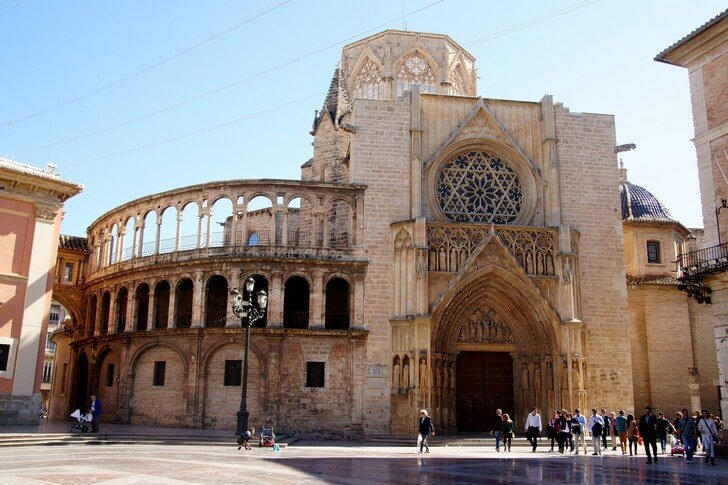
Address: Plaza de la Reina, 46003 Valencia, Spain
Phone: +34 963 91 00 36
Opening hours: Mon-Sat 10:00-18:00, Sun 08:00-14:00
Basilica of Our Lady Defender of the Dispossessed
The temple is located next to the Cathedral of St. Virgin Mary and is connected to it through a gallery. This seemingly inconspicuous church plays an important role for local residents, since it is here that the image of the patroness of the city, St. Mary the Intercessor, is kept. The statue is considered miraculous, people turned to it during the onset of disasters, wars, epidemics and other troubles that hit Valencia.
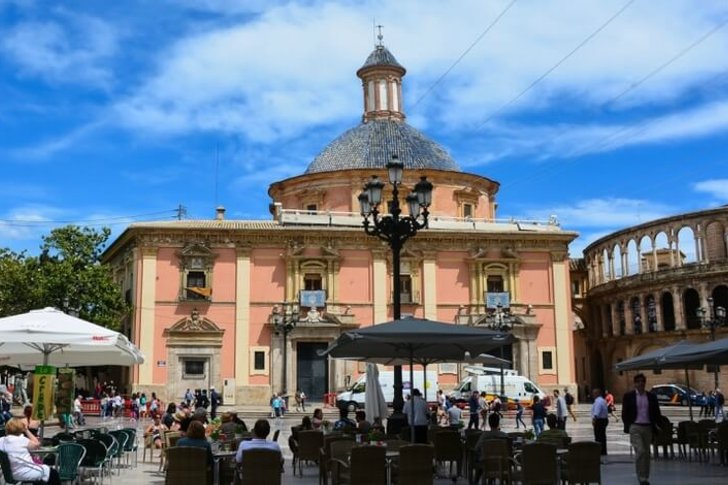
Address: Plaza de la Reina, 46001 Valencia, Spain
Phone: +34 963 91 45 08
Opening hours: Mon-Sat 10:00-13:00, 17:00-20:00, Sun 10:00-14:00
Church of Saints John
The temple is dedicated to two biblical characters - John the Theologian and John the Baptist. The building was built in the 13th century on the site of an Arab mosque destroyed after the expulsion of the Moors. In the XIV and XVI centuries. two strong fires occurred in the temple, after which the building was rebuilt. The final appearance, which has survived to this day, is a building of the 18th century with an elegant facade in the Baroque style.

Address: Plaza de San Juan, 46003 Valencia, Spain
Phone: +34 963 52 71 32
Opening hours: Вт-Sun 10:00-13:00, 17:00-20:00, Пн закрыто
Church of Santa Catalina
Temple, located near the Cathedral of Valencia, dedicated to the Christian martyr Catalina. According to legend, Catalina suffered for her faith and wisdom. By order of Emperor Maximilian, she was flayed alive. The cult of St. Catalina quickly spread throughout Europe. The Valencian temple in her honor was built under James I on the site of the demolished Arab mosque.
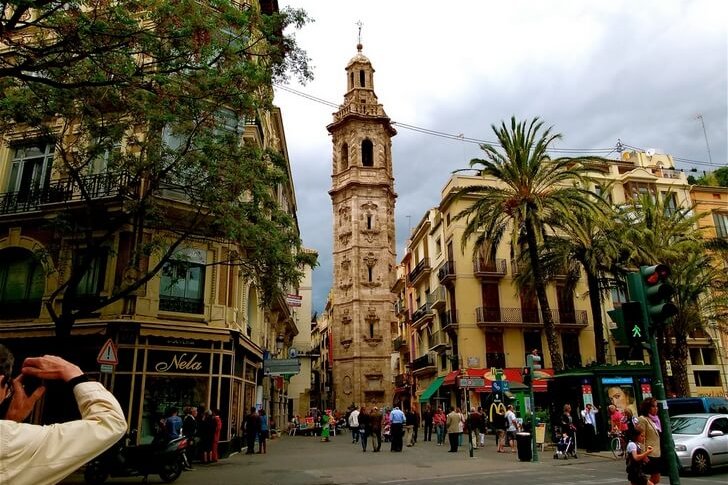
Address: Plaza de Santa Catalina, 46001 Valencia, Spain
Phone: +34 963 91 10 67
Opening hours: Вт-Сб 10:00-13:00, 17:00-20:00, Sun 10:00-14:00
Museum of Fine Arts of Valencia
A 17th-century building that used to house a school for the clergy. It contains outstanding collections of famous Spanish artists, including El Greco, Velázquez and Goya. Separate expositions are devoted to representatives of the Valencian art school - Nicolas Falco, Rodrigo de Oson and others. The museum also boasts paintings by famous Italian and Dutch masters.

Address: Calle San Piter, 46008 Valencia, Spain
Phone: +34 963 87 70 40
Opening hours: Вт-Sun 10:00-19:00, Пн закрыто
Palace of the Marquises of Dos Aguas
The palace is considered one of the most beautiful buildings in the city. The building is decorated with an intricate and luxurious baroque facade - a real work of art. The interiors are also decorated with special splendor. The palace houses a museum of ceramics, where several thousand exhibits are exhibited. Here you can find unique pottery dating back to the 16th century. Jewelry collections, furniture and interior items are also presented.
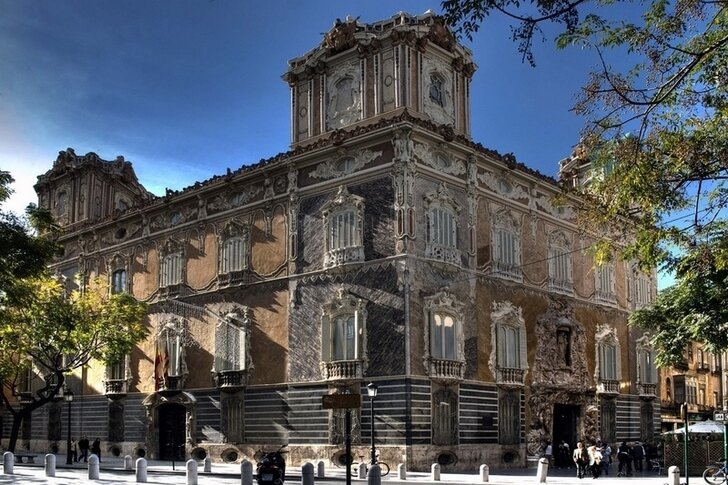
Address: Plaza Dos Aguas, 46002 Valencia, Spain
Phone: +34 963 52 35 10
Opening hours: Вт-Сб 10:00-14:00, 16:00-19:00, Sun 10:00-14:00
Palace of the Generalidad
The seat of the government of the autonomous region of Valencia, open to tourists at certain times. The construction of the palace began in the 15th century by order of the Council of Deputies. The northern facade of the building faces the Plaza de Manises, on the opposite side there is a cozy picturesque garden. The Generalidad underwent a large-scale reconstruction in the middle of the 20th century and has retained almost its original appearance.

Address: Plaza de la Generalitat, 46003 Valencia, Spain
Phone: +34 963 52 71 32
Opening hours: Mon-Fri 09:00-14:00
Lonja de la Seda (silk exchange)
An architectural complex consisting of several buildings of the 15th and 16th centuries. This is an outstanding creation of Spanish architects. In the Middle Ages, silk was traded on the territory of the complex. The ensemble includes a tower, an orange patio, a meeting room and the main columned hall, in which trade transactions were directly carried out. In this hall, on the floor of multi-colored marble, the rules of trade are carved in Latin.

Address: Plaza del Mercado, 46001 Valencia, Spain
Phone: +34 963 91 21 30
Opening hours: Mon-Sat 10:00-14:00, 16:00-19:00, Sun 10:00-14:00
Northern Station
The main city station where trains from Madrid arrive. The building was built at the beginning of the 20th century in the style of "southern modern" with some pretentiousness and pomposity. The interiors are originally decorated with tiles, tiles, mosaics, colored stained-glass windows and images of fruits. The architect Demetrio Ribes worked on the project. Perhaps he was trying to capture in stone the image of a flowering garden.
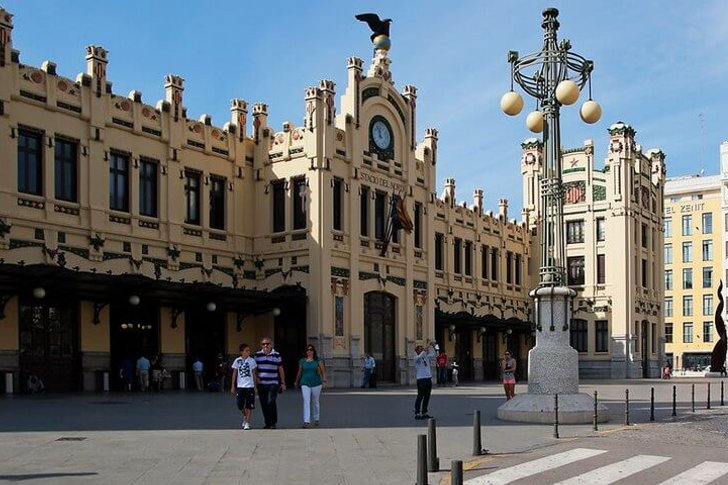
Address: Plaza del Ayuntamiento, 46001 Valencia, Spain
Phone: +34 963 52 15 57
Opening hours: 24/7
Plaza de Toros (bullring)
A large round amphitheater for bullfighting. It is located next to the North Station. The site was designed in the 19th century by Sebastian Monleon. The diameter of the arena is 52 meters, the capacity is up to 16 thousand spectators. The best bullfighters perform here, and about 25 fights are held annually. Inside there is a bullfighting museum where you can learn about the history and features of this national show.

Address: Plaza de Toros, 46004 Valencia, Spain
Phone: +34 963 51 53 11
Opening hours: Mon-Sat 10:00-14:00, 17:00-20:00
Central Market
A large grocery market, where products from all over the region are brought. Here are the best farms of the autonomous region of Valencia. On the shelves they sell dozens of varieties of cheese and jamon, sweets, fish, seafood, nuts, ingredients for making paella. The market is always busy and noisy. The building itself, where the shops are located, is a picturesque structure with colored stained-glass windows and wrought-iron gratings.

Address: Plaza del Mercado, 46001 Valencia, Spain
Phone: +34 963 91 42 70
Opening hours: Mon-Sat 07:00-15:00, Sun закрыто
Columbus Market
An Art Nouveau marketplace named after the great discoverer, but which has nothing to do with him. Here you can not only buy fresh products or souvenirs, but also have a delicious meal or taste countless and varied tapas. On holidays, the market is transformed and becomes a concert arena, where various performances are given.

Address: Calle Colón, 46004 Valencia, Spain
Phone: +34 963 52 35 10
Opening hours: Mon-Sat 10:00-20:00, Sun закрыто
Turia River Gardens
A huge park complex in the former bed of the river. Turia, which stretches through the whole city. It consists of several zones, which include the Royal Gardens, the City of Arts and Sciences and the Botanical Garden. In the middle of the 20th century, after another major flood, the authorities decided to change the course of the Turia River, and in the resulting place they organized a green park area (at first they planned to build a road). This is how modern Gardens were born.

Address: City Park, Valencia, Spain
Opening hours: 24/7
Bioparc Valencia
A progressive city zoo, where the most natural and comfortable conditions are created for animals. Opened to the public in 2008. There are no fenced enclosures or cages in the biopark, so the animals can move freely over a large area. Visitors are not allowed to feed or touch zoo animals. The territory is divided into several zones, where animals from different continents are housed.

Address: Calle Bioparc, 46015 Valencia, Spain
Phone: +34 902 02 25 00
Opening hours: Mon-Sun 10:00-18:00
Albufera Natural Park
A lake in the vicinity of Valencia and marshy areas around it, which the locals call the "little sea". This is a habitat for a large number of waterfowl. They nest here in whole flocks and are not at all afraid of people. In Albufera Park, there are several species listed in the Red Book. The best way to see the area's natural beauty is to take a boat tour.
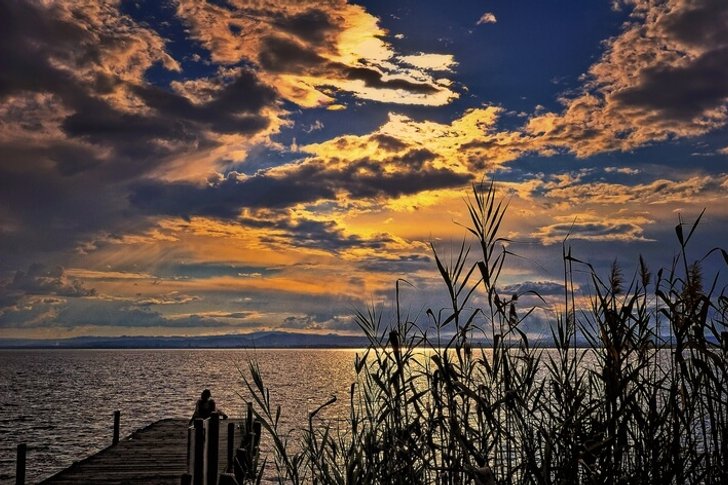
Address: La Albufera, 46012 Valencia, Spain
Phone: +34 963 52 71 32
Opening hours: Mon-Sun 09:00-18:00
